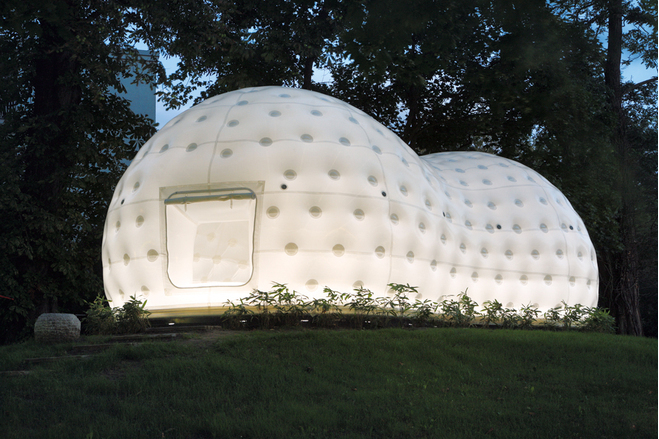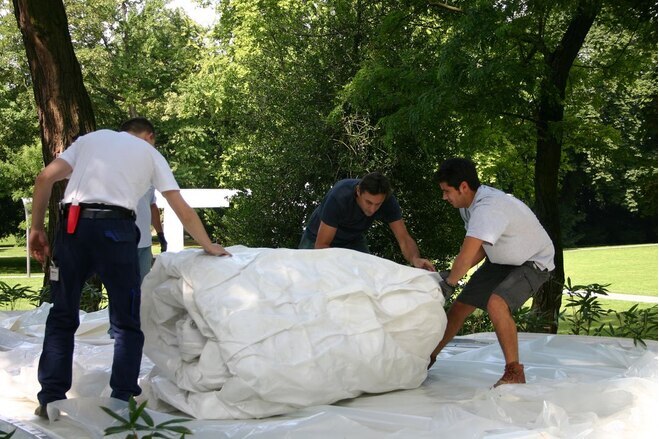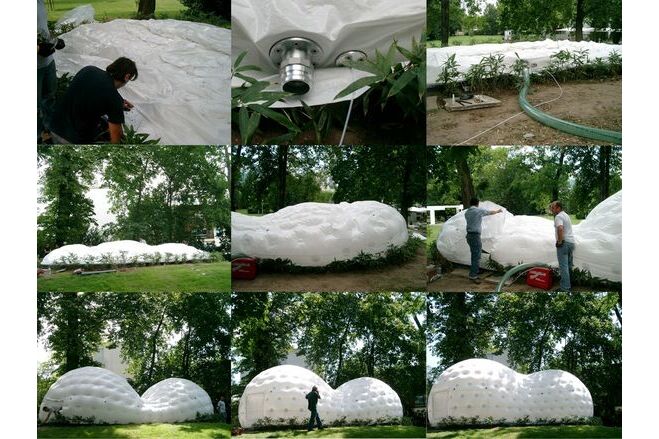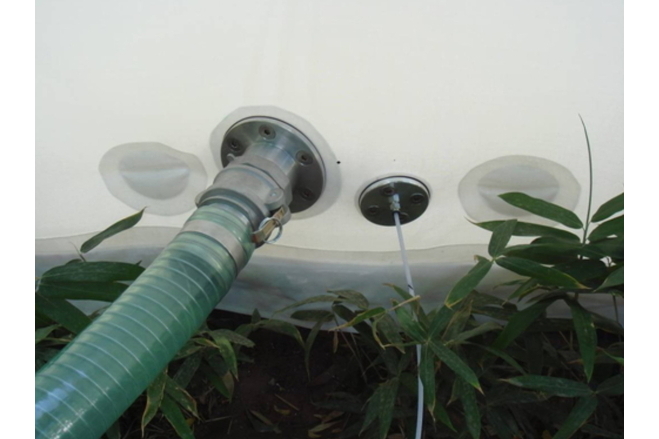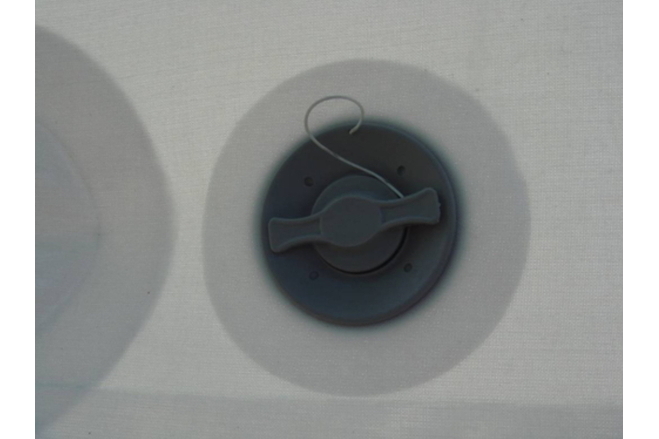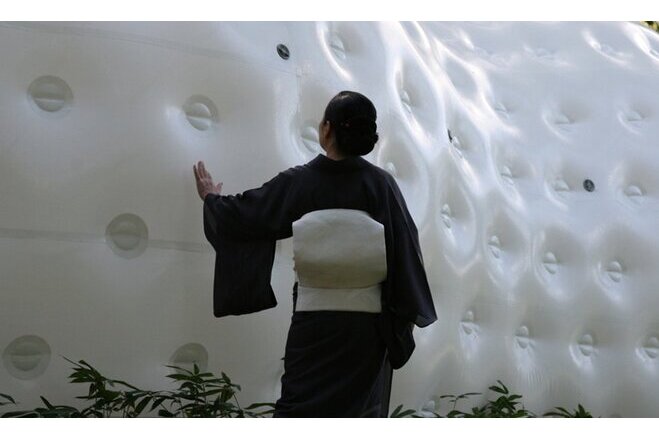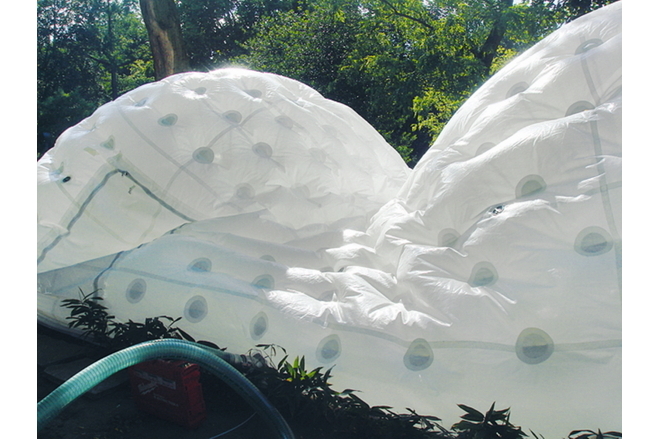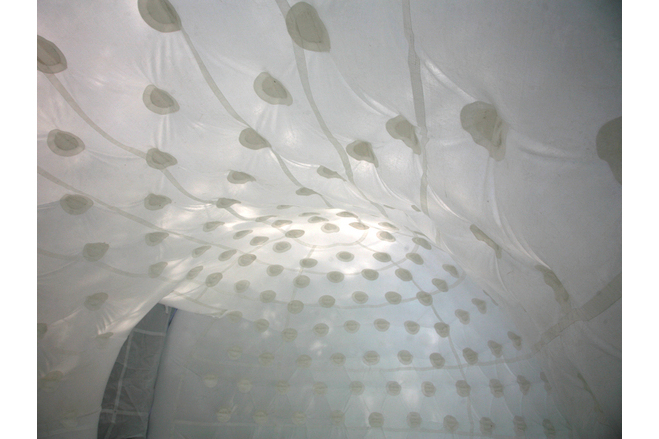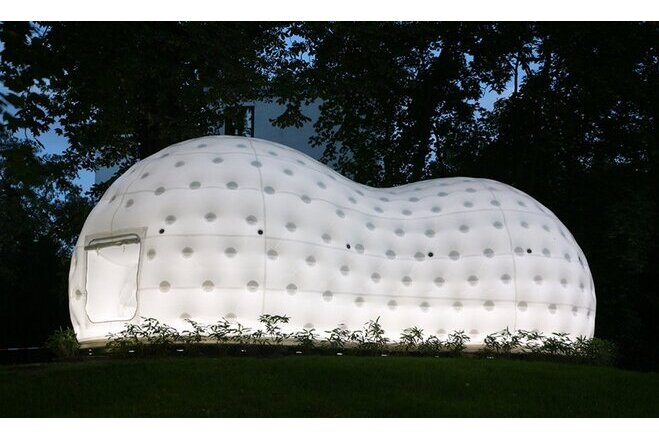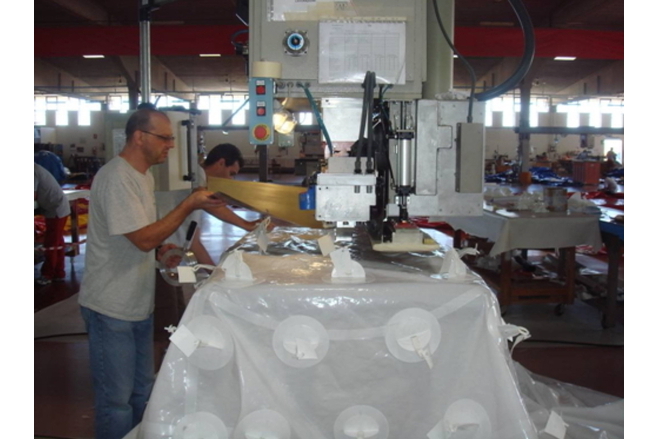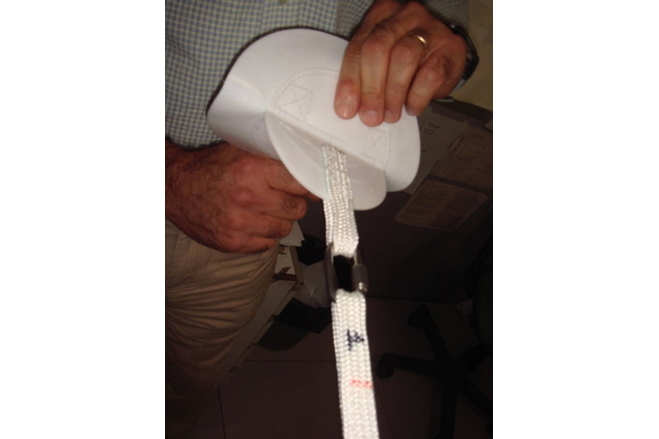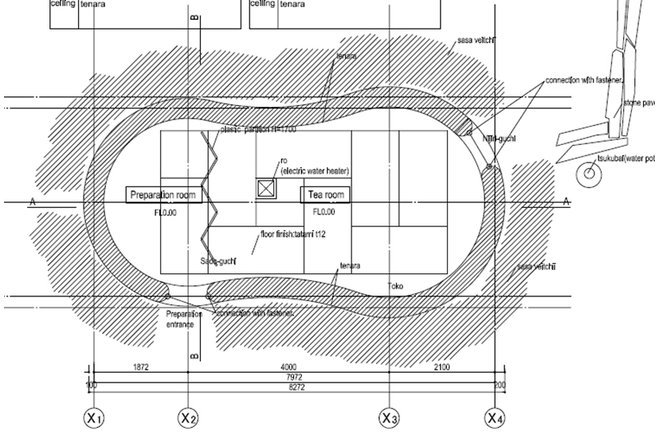Modern Teahouse 2007 - MAK Frankfurt/Main
General information
-
Home page
https://www.form-tl.de/projects/messeevent/modern-teahouse/?L=1
-
Location address
Frankfurt/Main
-
Location country
Germany
-
Name of the client/building owner
City of Frankfurt
-
Function of building
Restaurants & bars
-
Degree of enclosure
Fully enclosed structure
-
Climatic zone
Temperate - cold winters and mild summers
-
Type of application of the membrane
covering
-
Primary function of the tensile structure
- Thermal insulation
Description
The inflatable Tea Pavilion of the „Museum für angewandte Kunst (MAK)“ was as a kind of joint between sculpture and temporary room for ceremonies an unusual job for us.
It is a gift by Japanese companies to the city of Frankfurt and especially to the MAK which has very tight connections to Japan because of its far eastern collection.
An extract from Wikipedia describes the tea ceremony:
(Japanese ... cha-no-yu, engl. hot water for tea), also known as tea ritual is related to the philosophy of Zen. All the schools, and most of the variations, however, have facets in common: at its most basic, the tea ceremony involves the preparation and serving of tea to a guest or guests. (…)
Both tea houses and tea rooms are usually small, a typical floor size being 4 1/2 tatami, the traditional Japanese floor covering. The smallest tea room can be as little as one-and-a-half mats, and the size of the largest is determined only by the limits of its owner's resources. Building materials and decorations are deliberately simple and rustic. (...)
Conversation is kept to a minimum throughout. Guests relax and enjoy the atmosphere created by the sounds of the water and fire, the smell of the incense and tea, and the beauty and simplicity of the tea house and its seasonally appropriate decorations.
It is unusual that from the beginning Kengo Kuma has chosen modern material. While wood and sliding walls were left out, a hint of diminutive bamboo is found at the base of the pavilion. Tatamis, although made of easy-to-clean synthetic material, the low ceilings and the even lower doors as well as the zoning and the counter-sunk fire-place have been kept by Kengo Kuma during the whole design process.
Even on his first drawings he showed a smoothly shaped double-bowl structure which we modified and specified during monthly meetings. At the end the organic shaped structure with membrane cover became a self-carrying double-wall pneu with minimized assembly and dismantling times – and it fits into the budget of Japanese sponsors and the museum.
The pictures show the development of the project from 2005 till 2007.
After several very positive press reactions in db, Baumeister and the MAK-publications Prof. Schneider informed us that the magazin „Architectural Digest“ selected the Modern TeaHouse as one of the „110 Highlights des guten Stils in Deutschland (110 highlights of good style in Germany) “.
We were aware that the Modern Teahouse was very concisely designed and that the sculptural approach was not wrong. We knew as well that form, material and structural analysis are one and that we were not allowed to take any compromises. It was important that Canobbio tested our details and optimized until even Signor Bargelli, technician of the production, was content. Here especially the now conic pattern of the welding points is in my mind which avoids any wrinkles at the outside cover although folds were predictable because of the local load concentration of the ropes.
Because of its shape the Teahouse got the working title „Peanut“: a cover of 80 m² encloses with a distance of 40-100 cm an about 60 m² cover. At the footprint the two covers are air-tightly welded together and 3-4 times per m² joined together with thin synthetic ropes between which the air is blown in, similar to a dinghy or water wings.
But instead of membrane stripes like they are used for inflatable mattresses the two covers are only point wisely joined which leads to a golf ball shape and defines the texture of the inner and outer surface.
The stability of this flexible bowl is formed by the size of the footprint, the internal pressure and the number of joints. From 1.000 Pascal internal pressure the „Peanut“ stands up and with 1.500 Pascal the flexible bowl is stable enough to face a storm. The blower is dimensioned for 2.200 Pascal so that there is enough capacity for the air.
We had to take into account that after several times of assembly and dismantling the leakage of the cover will rise therefore the blower got a variable regulation so that the leaked supporting air can always be added. Another big advantage is the soft blower noise which allows a use inside the entrance hall.
Although the Modern Teahouse seems to be thin-skinned and sensitive, it is not because of the Teflon fabric which is inured to kink. It survived the run of thousands of visitors at the day of the inauguration and as well several times of assembly and dismantling.
You will find the Teahouse in the entrance hall of the museum or on a little hill in the museum’s park – or it is waiting for the next tea ceremony packed on a trolley. If you like you even can hire the Teahouse because also the blower is movable.
Description of the environmental conditions
Material of the cover
-
Cable-net/Fabric/Hybrid/Foil
Fabric
-
Material Fabric/Foil
Gore Tenara Type 1 3T40
Main dimensions and form
-
Covered surface (m2)
32
-
Maximum height (m)
3.4
-
Total length (m)
9
-
Total width (m)
4.6
Duration of use
-
Temporary or permanent structure
Temporary
-
Convertible or mobile
Convertible and mobile
Involved companies
-
Architects
KKAA Keno Kuma & Associates
-
Engineers
form TL ingenieure für tragwerk und leichtbau gmbh
-
Contractors
Canobbio spa
Castelnuovo Scrivia
-
Suppliers
Canobbio spa
Editor
-
Editor
Evi Corne



